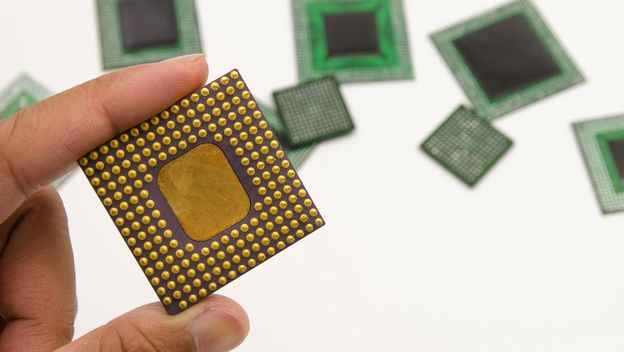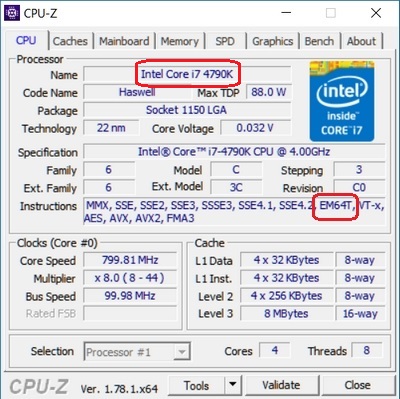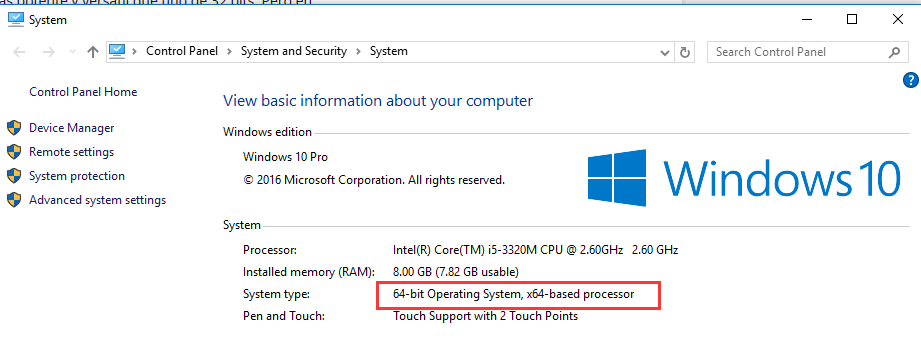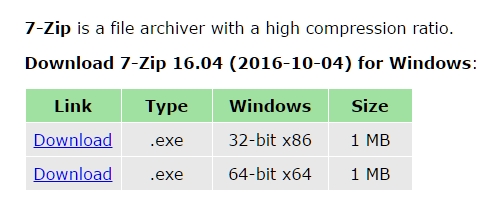Choosing a processor or operating system is not a simple task, especially when technical terms start to appear which are as foreign as Chinese.
When installing an operating system you have the option of using either the 32 or the 64-bit version. When buying a computer CPU or a smartphone, you will find that both 32 and 64-bit processors are available. What is the difference? Which is better? Can you really notice a difference between them? We are going to try to answer these questions.

In computing, lots of concepts are linked to bits because bits are the DNA of computing and therefore, everything revolves around them.
A bit is a basic unit of information. It can only have two values, 0 or 1. It is used to describe the state of being switched on or switched off of the transistors that form chips, or to describe when electric current is passing through or not.
Since a bit only has two values, the language of computers is binary code. In order to communicate with them we have to convert our letters and numbers into a unique combination of zeros and ones. In this way, the number 123, for example, is coded as 1111011, whilst the letter A in ASCII code (one of the methods used for coding) is 01000001.
It was decided that 8 bits should be grouped together to form a byte, according to the number of existing letters and numbers, and other technical questions. This grouping is used not only for coding, but for other concepts such as the size of registers (a sort of transport box) that move the data from one place to another within a programme. Because of this we now have 32-bit (8 x 4) or 64-bit (8 x 8) operating systems and processors, always multiples of 8. It is also sometimes written as x64.
The development of processors
We have seen how bits are grouped together not only to count, but also to translate the conventional language used in programming to binary code used by computers. At the time of designing a CPU or processor, a key piece of data is the size of the registers, used to transport data between the processor and the memory, among other things. The number of bits that they can transport is the basis of the processor and it sets limits like the maximum memory that you can use, or the data accessible in a CPU clock cycle. For example, an 8-bit register allows a maximum of 256 combinations, so it can only access 256 memory directions, except if more than one register is used at the same time. But a processor has a limited number of registers for different tasks so it can only use one or two to access the memory.
We don’t want this article to become a boring technical tutorial, but basically this explanation allows us to understand that processor bits set various limitations like the quantity of memory that you can access, or the processing speed.
The first domestic microprocessor was created by Intel in 1971. Intel 4004 was the first 4-bit processor and it was used on calculators. In 1972, the model Intel 8008 was launched which already used 8 bits and was the first destined for computers. It had 4500 transistors and it could execute 200.000 instructions per second. The first 16-bit CPU was Intel 8086, which gave rise to all the architecture of x86 processors, still used today. It was used for the first time in 1978.
The first 32-bit processor, the 80386, was marketed in 1986. 64-bit processors became popular with the CPU DEC Alpha in 1992. All the PC processors created in the last 10 years are 64-bit so this will most likely be what you have unless your computer is very old.
The use of 64-bit processors on smartphones is more recent. It was used for the first time with the iPhone 5S and its processor A7, in 2013. Leading manufacturers such as Qualcomm or Samsung also have 64-bit mobile phone processors.
What’s the difference?
When you go to buy a smartphone or a computer and you have the option of choosing between a 32 or a 64-bit processor… Which do you pick?
- 32-bit processors are cheaper and consume less but are also usually less powerful.
- 32-bit processors can only direct 4GB of memory. They can’t use more than 4GB of RAM directly and in many cases they can’t handle files bigger than 4 GB.
- 64-bit processors have 64-bit specific instructions. They execute programmes faster if the software is designed for 64-bit code use.
- For mobile phones, 64-bit CPUs can more efficiently handle encryption and manage the battery better.
To find out if your processor is 32 or 64-bit, you can use a program that identifies the hardware of your equipment. On a PC you can use CPU-Z, it is free. On Android you have CPU-X. If it doesn’t explicitly indicate if the CPU is 64-bits, look for extensions or sets of instructions that indicate 64-bit support:

You can also search on the manufacturer’s website for the model of the CPU and consult the specifications.
Software vs. hardware
A 64-bit processor is theoretically more powerful and versatile than a 32-bit one. But in practice there will only be differences if the software makes the most of its advantages. Therefore, if we have acquired a 64-bit processor, be it on a computer or a smartphone, to get the most out of it we need to make sure that the operating system, as well as the applications that we use, are 64-bit.
Before Windows 95, all software was 16-bit. Windows 95 used 32-bit domestic applications for the first time, and although Windows 7 and Windows 10 have 64-bit versions, lots of applications today still work only in 32-bit mode.
When you buy a smartphone it already comes with the 64-bit version of Android or iOS. In the case of a computer, you have to make sure that you install the correct version of Linux or Windows. The disc version of Windows 10 always includes the 32 and 64-bit discs, and it is the same for the download version. A 64-bit processor can work with a 32-bit operating system or software, but it will not make use of all its functions. If you have Windows, to see what version you possess you only have to go to the Control Panel and type System. Here you will see if you have a 32 or 64-bit version, of Windows as well as the CPU:

The programs
You also have to bear in mind the programs. If the processor and the operating systems are 64-bit, it won’t be very useful to continue using 32-bit applications. To be honest, for compatibility most programs are still 32-bit, or only offer one version which installs some libraries automatically. But more and more software is offering a 32 and a 64-bit version, so you have to make sure that you install the right one. Applications that need a lot of memory like photo editing programs, video editing, video games etc. will work better with the 64-bit code.
For example, the popular decompression software 7-Zip can be downloaded in the 32 or 64-bit version.

Bear in mind that a 64-bit operating system or processor can use 32-bit software but not the other way round. 64-bit programs will not work in a 32-bit system.
Windows has separate folders for the automatic installations of 32 and 64-bit programs. On a PC the 32-bit versions are sometimes referred to as x86 given the code is compatible with the original architecture of the PCs, because of this if you access the hard disk where Windows (C:) is installed you will see the following folders:

In program (x86) Files, the 32-bit applications are installed, and in the other folder, the 64-bit ones. It is not a simple method to sort, Windows associates a series of 32 or 64-bit DLL libraries with each folder, so if you install a 32-bit program in program Files, it will possibly not work until you install it in program (x86) Files.
Being closed systems controlled by Apple, for a few years now all the applications on iOS and Mac OS have been 64-bit. On Android, if your smartphone has an earlier version than Android 5.0 Lollipop, it still uses 32-bit applications.
32-bit hardware and software are already in disuse so, if your budget allows it, making the leap to 64-bit is recommended in order to fully take advantage of the most advanced functions that the most modern hardware and software have to offer.